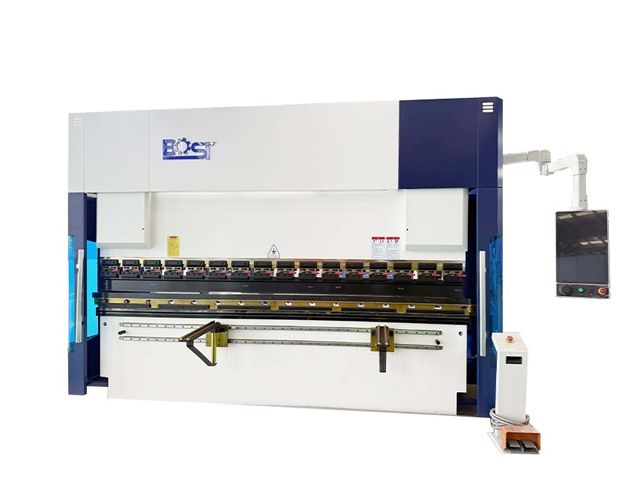Intelligent Automated Sheet Metal Processing Improves Production Efficiency
In today’s fast-evolving industrial landscape, intelligent automated sheet metal processing stands at the forefront of manufacturing innovation. By integrating advanced automation, artificial intelligence (AI), and precision machinery, manufacturers can dramatically improve production efficiency, reduce operational costs, and achieve unparalleled product quality. This comprehensive exploration delves into the transformative power of intelligent automation in sheet metal processing, unveiling how it reshapes traditional workflows into streamlined, data-driven manufacturing ecosystems.
The Evolution of Sheet Metal Processing: From Manual to Intelligent Automation
Sheet metal processing has historically relied on labor-intensive, manual operations involving cutting, bending, welding, and finishing. While effective for small batches, these processes are prone to inconsistencies, long lead times, and high error rates. The introduction of computer numerical control (CNC) machines improved precision, yet still required significant human intervention.
With the emergence of intelligent automated systems, manufacturers now leverage machine learning algorithms, real-time sensor data, and robotics to orchestrate complex operations autonomously. These systems are capable of adapting to production variables, predicting maintenance needs, and optimizing material usage — all factors that maximize throughput while minimizing waste and downtime.
Core Components of Intelligent Automated Sheet Metal Processing
To understand the efficiency gains, it is essential to examine the key technologies embedded within intelligent sheet metal equipment:
1. Advanced Robotics and CNC Integration
Modern robotic arms combined with CNC equipment perform precise cuts, bends, and welds with unmatched speed and accuracy. Robots equipped with vision systems and force sensors ensure consistent handling and adjustment in real-time, facilitating complex geometries without operator errors.
2. Artificial Intelligence and Machine Learning Algorithms
AI-driven software analyzes large volumes of process data, learning from production cycles to identify bottlenecks and optimize parameters. This continuous improvement cycle empowers the system to reduce cycle times, improve tool path planning, and predict failures before they occur, drastically reducing unplanned downtime.
3. IoT-Enabled Sensors and Connectivity
Internet of Things (IoT) sensors embedded in machinery collect critical data on temperature, vibration, and force applied during operations. Real-time connectivity allows for remote monitoring, enabling predictive maintenance strategies and instant troubleshooting, which keeps production lines running smoothly.
4. Automated Material Handling Systems
Automated conveyors, loaders, and unloading stations synchronize with processing machines to ensure seamless material flow. This coordination eliminates bottlenecks and reduces manual handling risks, improving overall throughput and worker safety.
Benefits of Intelligent Automation in Sheet Metal Processing
The integration of intelligent automated technologies in sheet metal manufacturing leads to numerous significant benefits:
Increased Production Speed and Throughput
By automating repetitive and complex tasks, production cycles are shortened dramatically. Intelligent systems optimize tool paths and reduce idle time, enabling manufacturers to increase output without sacrificing quality.
Enhanced Precision and Product Consistency
Robotic accuracy combined with AI-powered adaptive controls ensures each sheet metal component meets stringent specifications. This consistency reduces scrap rates and rework costs, improving both product reliability and customer satisfaction.
Cost Reduction and Material Optimization
Automation minimizes human errors that cause material waste. Intelligent nesting software optimizes sheet layouts to maximize raw material use, cutting down expenses on costly metals. Additionally, predictive maintenance reduces unexpected machine failures and costly downtime.
Improved Workplace Safety
Replacing manual, dangerous operations with robotic automation mitigates the risk of workplace injuries. Employees are freed to focus on supervisory and quality control roles, fostering a safer and more productive environment.
For more details please visit BOST
Practical Applications: Where Intelligent Sheet Metal Automation Excels
Industries that rely heavily on sheet metal components have already begun integrating intelligent automation to meet rising demand and tight delivery schedules:
Further reading:How to Optimize Your PCB Plating Line Process
Automotive Manufacturing
Solving Common Issues When Buying Intelligent Wheat Flour Mill Machines
How Can a Professional AGC Hydraulic Cylinders Manufacturer Solve Your Challenges?
Automobile production demands high volumes of precisely fabricated metal parts. Intelligent automation ensures rapid turnaround and high repeatability, critical for chassis, body panels, and structural components.
Aerospace and Defense
Given the stringent quality and safety requirements in aerospace, intelligent sheet metal processing provides the accuracy and traceability necessary for critical aircraft components.
Consumer Electronics
With complex designs and miniaturization trends, electronics manufacturers benefit from adaptive automation that handles delicate sheet metal parts with precision and speed.
Construction and Infrastructure
Sheet metal used in HVAC, roofing, and structural supports is produced faster and more accurately, supporting the accelerated timelines of modern construction projects.
Key Strategies to Implement Intelligent Automation Successfully
Comprehensive Workflow Analysis
Before deploying automation, conduct a detailed assessment of existing sheet metal processes to identify bottlenecks, repetitive tasks, and areas prone to errors. This evaluation guides targeted technology investments.
Integration of Smart Manufacturing Platforms
Utilize Manufacturing Execution Systems (MES) and Enterprise Resource Planning (ERP) tools integrated with automation to enable real-time production tracking and seamless information flow across departments.
Continuous Training and Workforce Engagement
Equip employees with skills to manage and interpret intelligent systems. Human oversight remains essential for handling exceptions and continuous improvement initiatives.
Scalability and Modular Design
Choose automation solutions with modular architectures to allow gradual scaling and customization as production needs evolve.
Future Trends in Intelligent Sheet Metal Processing
The horizon of intelligent automation promises exciting advancements that will further propel production efficiency:
Edge Computing for instantaneous on-site data analysis, reducing latency and enhancing decision-making.
Collaborative Robots (Cobots) working alongside human operators for flexible hybrid workflows.
Augmented Reality (AR) Assisted Maintenance improving machine servicing and training through visual overlays.
Sustainable Manufacturing Practices driven by AI optimization to minimize energy consumption and environmental impact.
Conclusion: Embracing the Intelligent Automation Revolution
The integration of intelligent automated sheet metal processing redefines manufacturing efficiency, quality, and safety. Organizations adopting these technologies secure competitive advantages through faster turnaround, reduced costs, and superior product quality. Investing in intelligent automation not only future-proofs production but also paves the way for sustainable growth in an increasingly demanding industrial landscape.
If your organization is aiming to stay ahead in the sheet metal manufacturing sector, embracing intelligent automation is no longer optional—it is imperative.
19
0
0
All Comments (0)
Previous: How Can a Professional AGC Hydraulic Cylinders Manufacturer Solve Your Challenges?
Next: How Can a Continuous Feed Wrapping Machine Reduce Your Production Downtime?
If you are interested in sending in a Guest Blogger Submission,welcome to write for us!



Comments